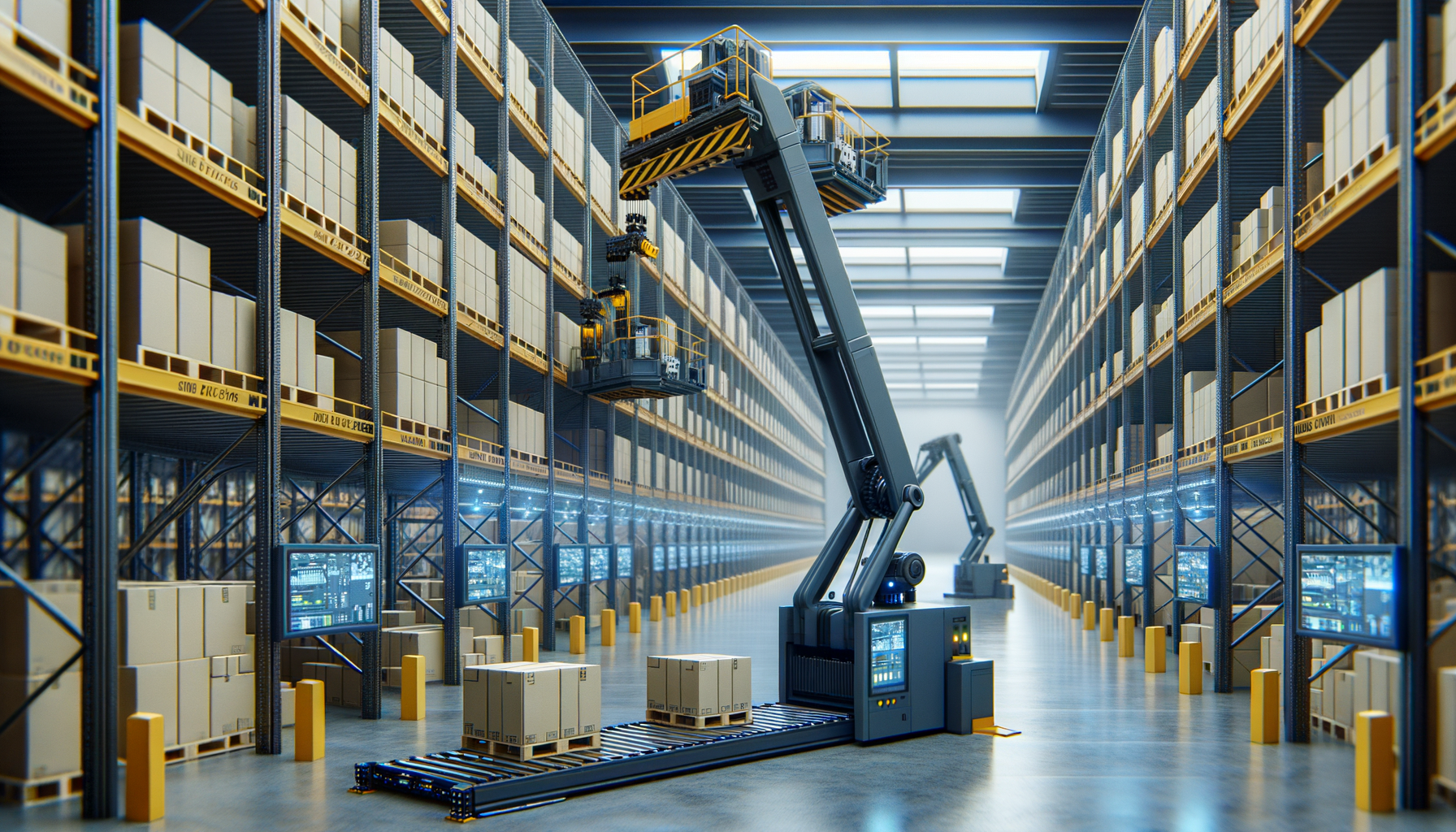Enhancing Warehouse Efficiency with Automated Stacker Cranes
Automated Stacker Cranes: These innovative systems enhance warehouse efficiency by automating the storage and retrieval of goods, optimizing space utilization and reducing manual labor. They are designed to improve operational workflows and increase productivity in various industries.

Introduction to Automated Stacker Cranes
In the rapidly evolving world of logistics and warehousing, efficiency is paramount. Automated stacker cranes have emerged as a significant technological advancement, offering a sophisticated solution to optimize warehouse operations. These systems automate the storage and retrieval of goods, significantly reducing the need for manual labor and enhancing the overall workflow. As industries strive to meet increasing demands with limited resources, automated stacker cranes present a viable option to streamline processes and improve productivity.
Automated stacker cranes are designed to operate within narrow aisles, maximizing the use of available space. This feature is particularly advantageous in urban areas where warehouse space is at a premium. By integrating these systems, businesses can achieve higher storage density, leading to cost savings and improved inventory management. Furthermore, the precision and speed of automated stacker cranes contribute to reducing errors and increasing the accuracy of order fulfillment.
Operational Benefits of Automated Stacker Cranes
The implementation of automated stacker cranes brings numerous operational benefits that significantly enhance warehouse efficiency. One of the primary advantages is the reduction in manual labor, which not only cuts costs but also minimizes the risk of workplace injuries. By automating repetitive tasks, employees can focus on more strategic activities, leading to improved morale and productivity.
In addition to labor savings, automated stacker cranes offer exceptional accuracy and reliability. These systems are equipped with advanced sensors and software, ensuring precise placement and retrieval of goods. This level of precision reduces the likelihood of errors, which can be costly in terms of both time and resources. Moreover, the reliability of automated stacker cranes means fewer disruptions in operations, allowing for a smoother workflow and timely order fulfillment.
Another significant benefit is the scalability of automated stacker cranes. As businesses grow, these systems can be adapted to accommodate increased volumes without the need for extensive infrastructure changes. This flexibility is crucial in today’s dynamic market environment, where demand can fluctuate rapidly.
Technological Advancements in Automated Stacker Cranes
The technological advancements in automated stacker cranes have been instrumental in their widespread adoption across various industries. Modern stacker cranes are equipped with state-of-the-art technology, including advanced sensors, automated control systems, and real-time data analytics. These features enable seamless integration with warehouse management systems, providing valuable insights into inventory levels, order status, and overall operational efficiency.
One of the key technological innovations is the use of artificial intelligence and machine learning algorithms. These technologies allow automated stacker cranes to learn from past operations, optimizing their performance over time. By analyzing patterns and trends, these systems can make intelligent decisions, further enhancing efficiency and reducing operational costs.
Additionally, the incorporation of IoT (Internet of Things) technology has revolutionized the way automated stacker cranes operate. IoT-enabled devices can communicate with each other and with central control systems, providing real-time updates and alerts. This connectivity ensures that any issues are promptly addressed, minimizing downtime and maintaining a high level of operational efficiency.
Applications of Automated Stacker Cranes Across Industries
Automated stacker cranes have found applications in a wide range of industries, each benefiting from the unique advantages these systems offer. In the retail sector, for example, automated stacker cranes enable faster order processing and fulfillment, meeting the high expectations of consumers for quick delivery times. By optimizing storage and retrieval processes, retailers can manage inventory more effectively and reduce lead times.
In the manufacturing industry, automated stacker cranes play a critical role in managing raw materials and finished products. By automating the movement of goods within the warehouse, manufacturers can streamline production processes and reduce the time required for assembly and shipment. This efficiency is particularly valuable in industries with complex supply chains, where timely delivery of components is essential.
The pharmaceutical industry also benefits from the precision and reliability of automated stacker cranes. With strict regulations governing the storage and handling of pharmaceutical products, these systems ensure compliance by maintaining accurate records and minimizing the risk of contamination or damage.
Future Prospects and Innovations in Automated Stacker Cranes
The future of automated stacker cranes is promising, with ongoing innovations set to enhance their capabilities further. As technology continues to advance, these systems are expected to become even more efficient, reliable, and versatile. One area of development is the integration of renewable energy sources, such as solar power, to reduce the environmental impact of automated stacker cranes.
Another exciting prospect is the use of robotics and autonomous vehicles in conjunction with automated stacker cranes. By combining these technologies, warehouses can achieve unprecedented levels of automation, with minimal human intervention required. This integration is likely to lead to even greater efficiency and cost savings, as well as improved safety and working conditions for employees.
As businesses continue to embrace digital transformation, the role of automated stacker cranes in the supply chain is set to expand. With their ability to optimize operations, reduce costs, and improve customer satisfaction, these systems are poised to become an integral part of modern warehouse management strategies.